The
semantic structure of the word. Types of lexical meaning.
The branch
of Linguistics which studies the meaning of different linguistic
units is called Semantics.
The
part of Lexicology which studies the meaning and the development of
meaning of words is called Semasiology.
There
are different approaches to the problem of word meaning: 1) The
referential,
or denotational
approach
is characterized by the thought that (тем
что)
the essence (суть)
of meaning lies in the interconnection and interdependence between:
the word as the soundform, the referent, and the concept. Here
meaning
is the realization of the concept/notion by means of a definite
language system. 2)The functional,
or contextual
approach
is characterized by the idea that the meaning of a linguistic unit
may be studied only through its relation to other linguistic units.
Thus, meaning
is understood as the function of linguistic signs, or their use in
context.
Word
meaning is represented by different types of meaning: grammatical,
lexical, lexico-grammatical.
Grammatical
meaning
is the component of word meaning, recurrent in identical sets of
individual forms of different words. It is expressed by:
-
word-form (such as books,
girls, boys – the meaning of plurarity; looked, asked – tense
meaning); -
the position of the word in
relation to other words (e.g. He sings well, She dances badly –
‘sings’ and ‘dances’ are found in identical positions
between a pronoun and an adverb, their identical distribution proves
that they have identical gr.m.)
Lexico-grammatical
meaning
of the word is the common denominator (знаменатель)
to all the meanings of the words belonging to a certain
lexico-grammatical class or group of words.
Lexical
meaning
is the component of word meaning recurrent in all the forms of the
word. The word forms go, goes, went, gone, going have different
gr.m., but they have one and the same l.m. ‘the process of
movement’.
The main
component of L.m.
are:
-
the
denotational
meaning
of words is the same for all the speakers. It is the realization of
the concept by means of the given language. -
The
pragmatic
aspect
of l.m. is the part of meaning, that conveys information on the
situation of communication: information on the ‘time and space’
relationship of the participants, information on the participants in
the given language community, information on the register of
communication. -
The
connotational
meaning
conveys the speaker’s attitude toward what he is speaking about.
There are 4 main types of connotations: a) The emotional
connotation
expresses human emotions and feelings (e.g. daddy, father); b) The
evaluative
connotation expresses approval or disapproval (e.g. agent and spy,
planning and scheming=planning secretly); c) The intensifying
connotation adds emphasis (усиление)
to the meaning. (e.g. enormous, huge, tremendous=very); d) The
stylistic
connotation determines the functional speech style characteristic of
the word usage (dad-father-parent; colloquial-neutral-bookish).
Polysemy is the
abbility of a word to have more than one m-g. The causes of the
development of polysemy in Eng. are:1) the great amount of
monosyllabic root words; 2) an abundance of words of long duration,
which in the course of time were used to express more new m-gs thus
becoming highly polysemantic. Monosemantic words, i.e. words which
have only one m-g form. They are mostly names of birds
(blackbird,swallow), animals (walrus, weasel), fishes (ruff, perch) &
special terms (systole, phoneme). The bulk of Eng. words are
polysemantic,i.e. they have several m-gs. The m-g in speech is
contextual. In a definite context any polysemantic word expresses
only one m-g. A word in one of its m-g in which it is used in speech
is called a lexico-semantic variant of a word. The semantic structure
of a polysemantic word presents a set of interrelated &
interdependent lexico-semantic variants. WE distinguish on the
synchronic level: — the basic (major) & the minor; — the central
& the marginal; -direct & transferred(figurative); -. Every
LSV is connected with the major m-g due to the existence of the
common semantic components/ semes. The seme is the smallest further
indivisible unit of m-g, the smallest unit of the plan of content.
The analysis of the m-g into these components, or semes, is called
the componential analysis.
Соседние файлы в папке Гос филология
- #
- #
- #
- #
- #
- #
- #
- #
- #
- #
- #
- Размер: 241.5 Кб
- Количество слайдов: 21

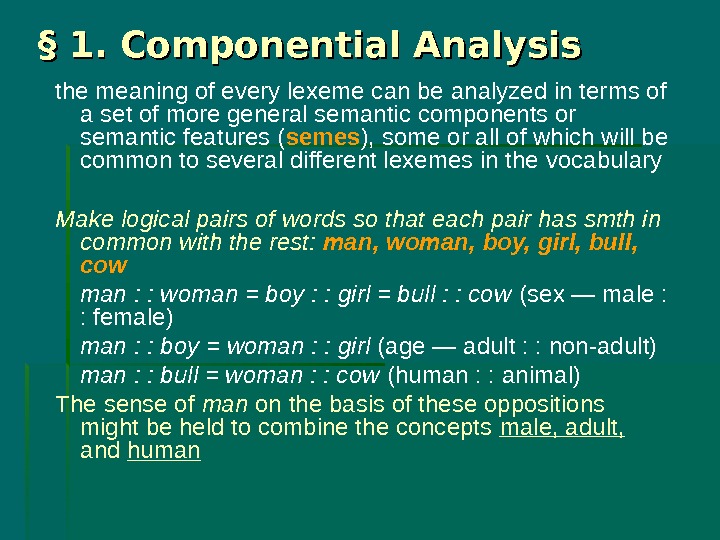


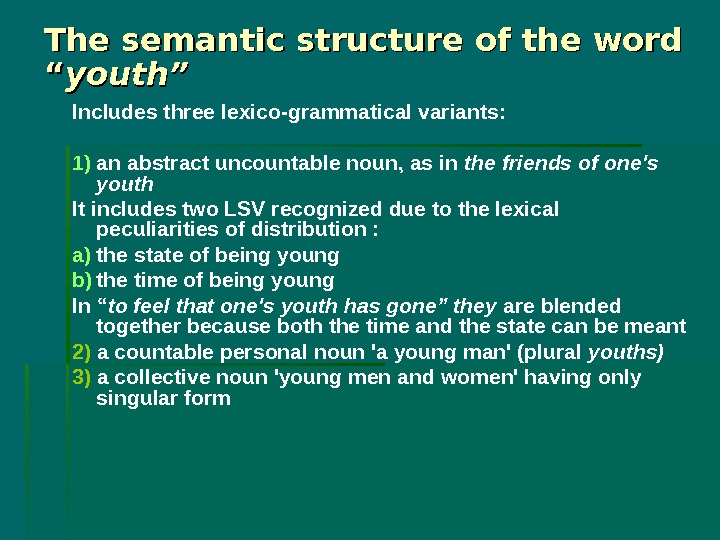



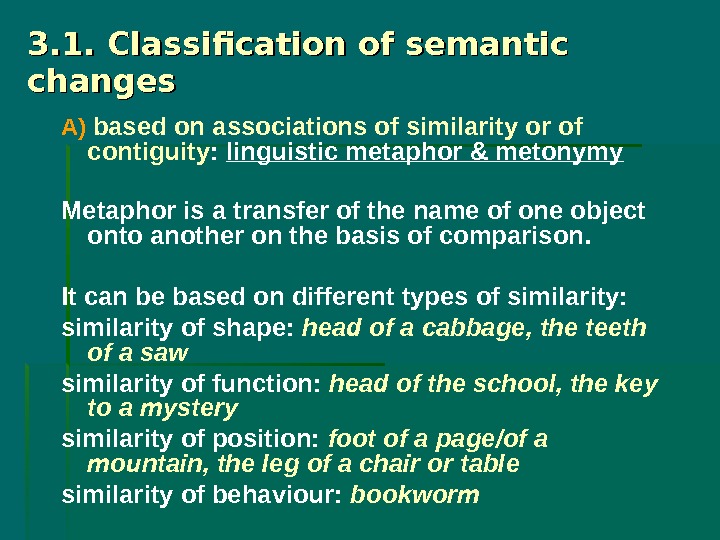

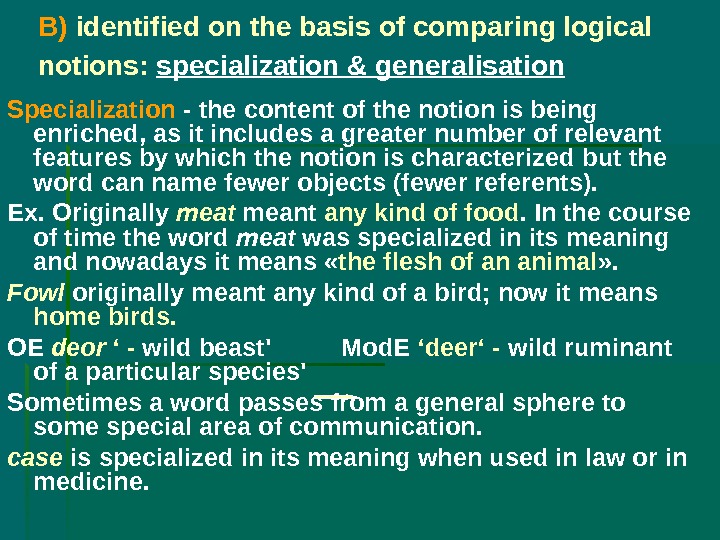




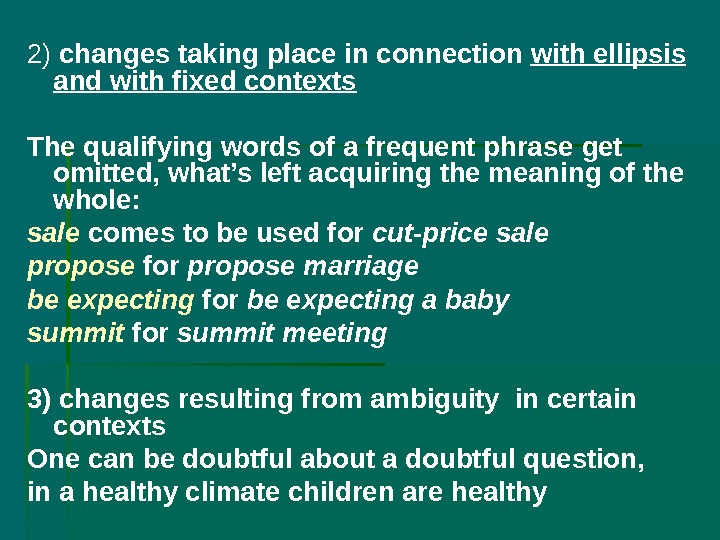


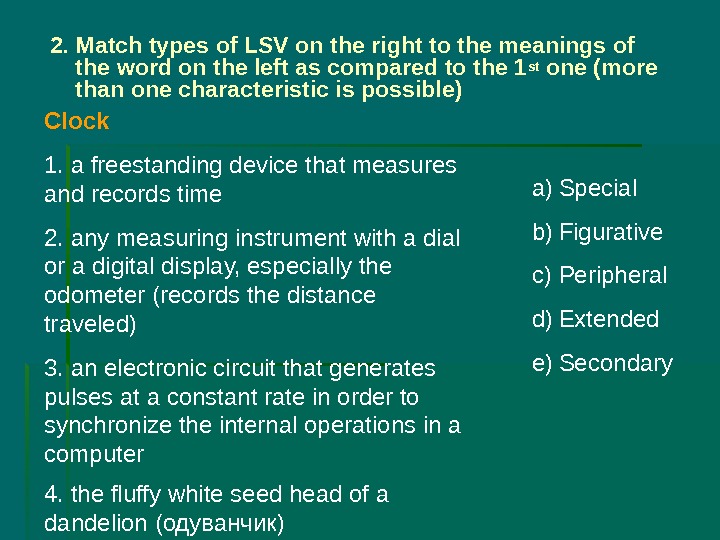


How do words relate to the objects they refer to? One way of thinking about this is that signs relate to objects via “concepts,” things that exist in our minds.
Word Semantics is concerned with word meaning. There are two branches of Word Semantics: Referential Semantics and Lexical Semantics.
Referential Semantics
What is the relation between words and the real-life objects they refer to? We use words to refer to objects. Plato, the famous Greek philosopher, suggested that words were names for objects.
Can words relate directly to things in the real world? How about onomatopoeia, for example?
We might say that onomatopoeic words like “hiccup” and “buzz” indicate this direct relationship. However, this is very limited because all these words are strongly connected with sound. What about actual real-world things?
A direct word -to-object connection between words and objects looks promising with objects like cows.
Everywhere in the world, people will (probably) agree about the kind of sound a cow makes. However, not all animals are so cooperative. People in different countries have different kinds of words for the sounds made by dogs. Even English-speakers cannot seem to make up their minds! So onomatopoeia does not provide a very reliable way of relating words directly to objects.
People in different parts of the world seem to have different ways of perceiving the sounds that dogs make.
That is not the only problem. Some meanings, like Love or Know for example, are abstract and not really concrete objects. Some meanings, like Dinosaurs, refer to real-world objects that no longer exist. How can words have a direct relation to these kinds of objects?
What do you think of this? A word like “house” does not relate directly to actual houses in the real world. It is mediated by an image in our minds (a concept).
One solution is to say that the relation between words and objects is mediated by concepts. Words are tied to images or ideas in our minds and these then relate to the objects in the real world. Now what form do these concepts take? After all, they’re in our minds; we cannot take them out and look at them. And how are they formed?
Do concepts build up in our minds via logical connections?
Do concepts in our mind build up in our minds with atomic components? What do you think? Do we have these bits of meaning in our minds working together to give concepts their meaning?
How about complex semantic networks (an idea originally borrowed from computer science) that connect each concept to other concepts in meaningful ways?
How about the idea that prototypes play an important role in building and organizing concepts according to categories?
What role do already-learned words and concepts play in building up meaning? Do we need to have the concepts for “unmarried” and “male” before we can acquire the concept “bachelor”? Do you need the concept of “formality” and “elder” plus the concept of “sibling” and “male” before you can acquire the concept “お兄さん.”
Lexical Semantics
Lexical Semantics is concerned with the complex connections between linguistic elements (words/lexemes).
The other branch of Word Semantics is concerned with Sense. While Reference deals with the relationship between words and the real world, Sense is concerned with the connections between words and other words. Because it is concerned with the connection between words (lexemes), it is called Lexical Semantics. There are a number of possible relationships between words.
Synonymy. Some words have the same core meaning.
Antonymy. This is semantic oppositeness. Big — Small. Dead — Alive. Man — Woman. How are these “opposites” different?
Hyponymy is where one word (lexeme) is included in another one. Kitchen table is a kind of table, for example.
Some linguists think Meronymy is an important Sense Relation. This is where a word refers to a concept that forms a part of another. Here, “engine” is part of “car.”















